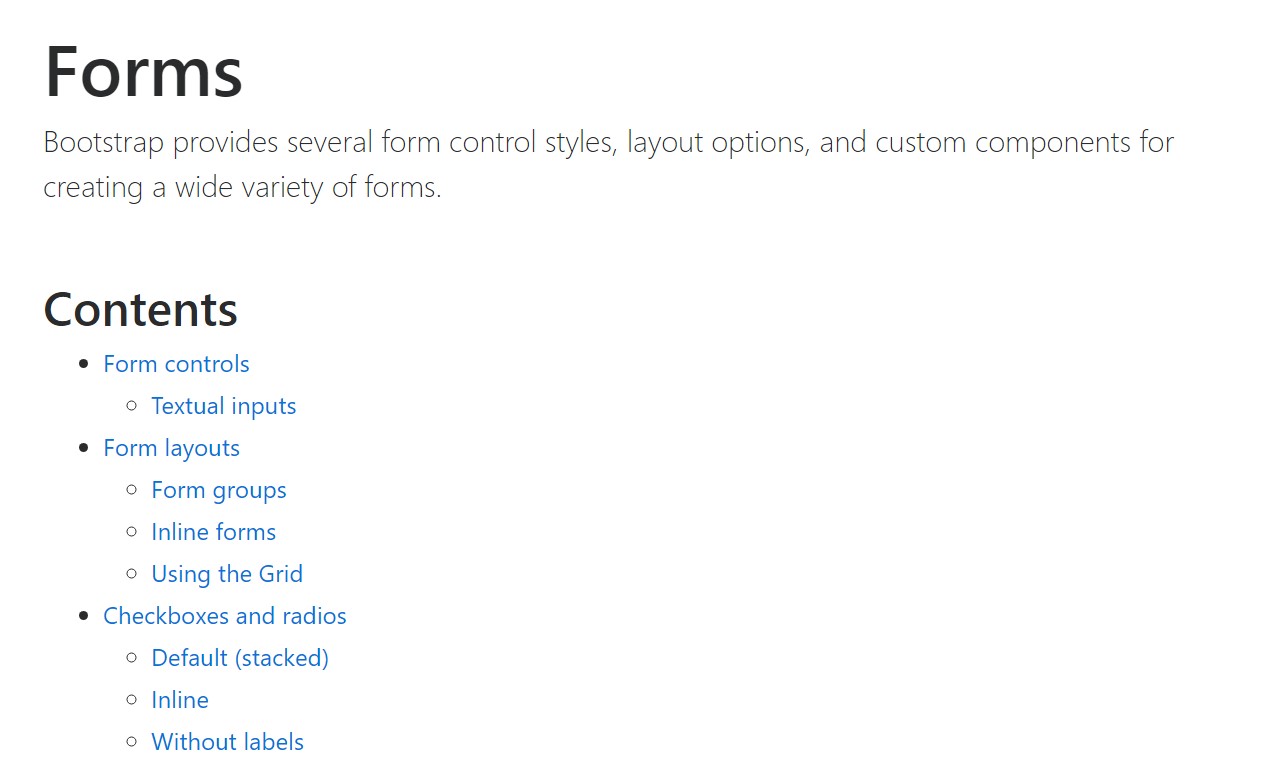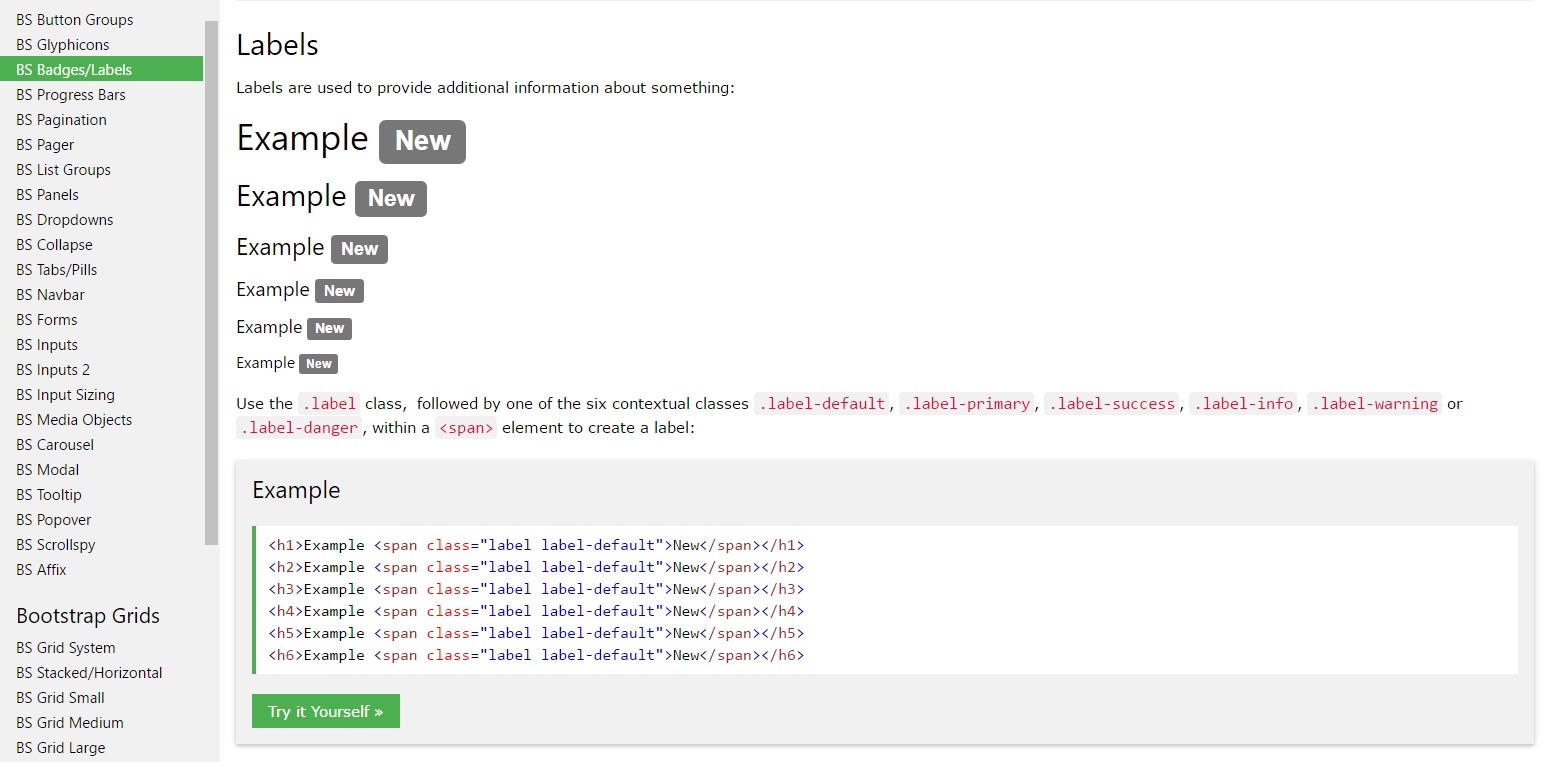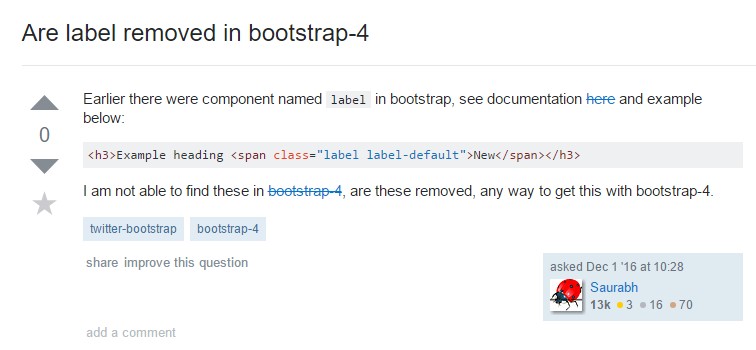Bootstrap Label Checkbox
Overview
As reviewed before, within the webpages which we are making, we often really need featuring easy or else more complicated forms to inquire the website visitor for a point of view, feedback, certain personal data or else preferences. We execute that incorporating the appropriate managements in our forms very carefully considering the form structure and also the exact commands which really should be applied relating to the info we need and the certain circumstance involved-- like we simply cannot have an order for a single colored phone case that is both white and blue , an individual just can't be both male and female in gender or a product need to be followed with several extensions that do not omit each other so selecting each one must add it not excluding the others readily chosen. Often, certainly, we do need a precise web mail provided as well as a telephone number that also needs the input which has to comply with particular format in order to be appropriate and of course at special circumstances we exactly really need site visitor's thoughts on a topic the manner they sense it-- in their personal words.
For all of these types of situations we operate the proper controls-- such as radio switches, checkboxes, input areas, content area elements and so on but there is definitely an essential element tied each of these kinds of sectors that makes our forms comfortable and conveniently readable for the website visitor to navigate through knowing in all times what is actually wanted and effectively handling even the small-sized controls like radio buttons and checkboxes. Most especially today when the internet becomes more mobile together with web pages featured on different small sized displays this element is crucial in providing productiveness and speed in accomplishing our form.This element is a Bootstrap Label Inline.
How to put into action the Bootstrap Label Css:
The things already has been simply said deal with the <label> component that is fully supported inside of the last version of one of the most favored mobile friendly framework-- Bootstrap 4. The <label> element does not really stand apart using beautiful appeal or multiple functions but it performs the possibly most crucial purpose in our forms-- lets the site visitors learn what communicating with a certain form control will lead to and incorporating a number of clickable field for switching on the control in itself which in the event of small-sized controls like radio or checkboxes and mobile device displays is essential.
The structure is quite practical-- just place a <label> element within your markup assigning it the for =" ~ labeled form control ID ~ " attribute and write the appropriate content you require to be demonstrated in it. The for="" attribute instructs the web browser which form regulation to get turned on in case the visitor selects the <label> element and is able to be rejected helping keep the very same behaviour if you simply just wrap the wanted command within the <label> in itself.
Nonetheless covering form controls inside labels is pretty complicating the code and it is actually better to reject it-- additionally with the for ="" attribute you acquire some flexibility in producing your form's layout and so it is actually the much better approach to go for.
Along with conventional text in the <label> you are able to likewise set some easy HTML tags just like a heading or a short part perhaps-- that is really not a basic instance but is possible and of course all of it bases on the specific objective of the form you're working with.
Some example of form with no label
Should you have no text message just within the <label>, the input is positioned just as you would certainly expect. Presently only performs on non-inline checkboxes and radios. Remember to currently give some form of Bootstrap Label Input for assistive modern technologies ( for example, working with aria-label).

<div class="form-check">
<label class="form-check-label">
<input class="form-check-input" type="checkbox" id="blankCheckbox" value="option1" aria-label="...">
</label>
</div>
<div class="form-check">
<label class="form-check-label">
<input class="form-check-input" type="radio" name="blankRadio" id="blankRadio1" value="option1" aria-label="...">
</label>
</div>Entertaining detail to bear in mind
Useful thing to keep in mind with regards to labels inside Bootstrap 4 in case that in the brand new model of the framework this form of component's styling has been actually modified a bit. The <label> components now are not featured like inline-block that acquires more effective versatility in placement allowing several margins to be set up.
Conclusions
And so currently you realise what the # elements are for and how they function in Bootstrap 4-- the only thing that's left is planning on the proper form fields you have to connect them to.
Take a look at some video guide relating to Bootstrap label
Connected topics:
Usage of the label inside in Bootstrap Forms: official records

Bootstrap label tutorial

Taking out label in Bootstrap 4
